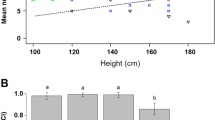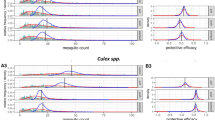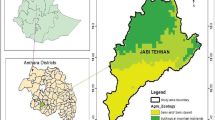Abstract
ONE of the most important vectors of malaria in India, and the only vector so far reported in Ceylon, is A. culicifacies. Afridi and Puri1 reviewed the available literature relating to this species in India. Covell2 lists the countries where this mosquito has been found, its breeding places, adult habits and relation to malaria. In India, this is reported to be a domestic species. James and Gunasekera3 were the first to find this species infected in Nature in Ceylon. Carter and Jacocks4 confirmed these findings. During the various regional epidemics that occurred in Ceylon during and since 1934, this was the only anopheline species found infected with malarial parasites. According to Carter (unpublished reports), A. culicifacies in Ceylon is domestic in its habits and has been captured in dwellings and in human-baited traps. It breeds profusely in the sand pools and rock pools in the beds of streams and rivers. The breeding places so far described were in the close vicinity of human habitations.
This is a preview of subscription content, access via your institution
Access options
Subscribe to this journal
Receive 51 print issues and online access
$199.00 per year
only $3.90 per issue
Buy this article
- Purchase on SpringerLink
- Instant access to full article PDF
Prices may be subject to local taxes which are calculated during checkout
Similar content being viewed by others
References
Afridi, M. K., and Puri, I. M., J. Malaria Inst. India, 3, No. 1, 1 (1940).
Covell, G., J. Malaria Inst. India, 5, No. 4, 401 (1944).
James, S. P., and Gunasekera, S. T., Sessional Paper 34 (1913).
Carter, H. F., and Jacocks, W. P., Ceylon J. Sci., D, 2, Pt. 2, 67 (1929).
Author information
Authors and Affiliations
Rights and permissions
About this article
Cite this article
RAJENDRAM, S., CADEK, M. & VISVALINGAM, T. Malaria Eradication in Ceylon. Nature 166, 486 (1950). https://doi.org/10.1038/166486a0
Issue date:
DOI: https://doi.org/10.1038/166486a0



